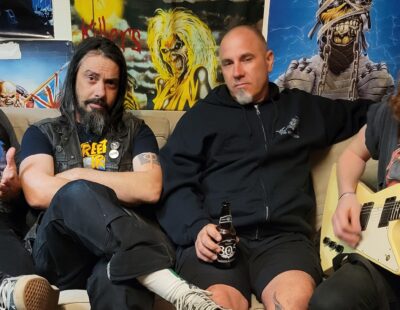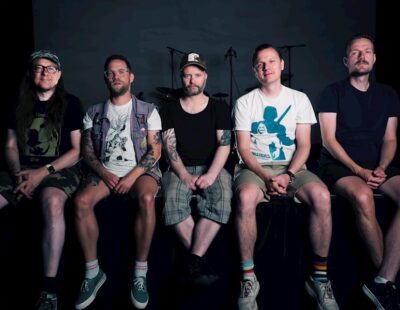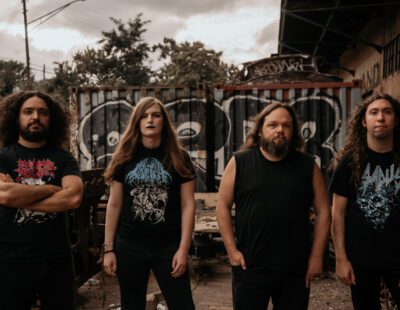OK, what is the central idea to Amplicon? I read bits of what sounded to be a neat concept.Runhild Gammelsaeter: In a bout of delusions of grandeur, I decided to make a soundtrack of the cycle of the universe, from its birth by the big bang to its collapse, the big crunch, or whatever the ultimate fate of the universe may be. On the way, that cycle covers the existence of human beings—the conception of life, evolution of man, birth, love, death, etc. Each track has a scientific, preferably biologic, fundament but mainly I wanted to make sound to each theme. The title implies an amplification of parts, which is what the record is. Pieces of sound, words, phrases recorded and amplified. So, the initial idea was threefold: Make a record that covers the cycle of our universe, use only vocal sounds and words to describe each defined ‘phase’, cut, warp and mix together this in a specific order to create a sound image. In the end, I also used some instruments to fill in, but it was meant to be a vocal only record.
I think a lot of people might view Amplicon as a bit spastic. Do you see all the movements as a singular entity or audio vignettes meant to be ingested as parts of the whole?
Runhild Gammelsaeter: Yes, it’s composed to be spastic. I wanted that. But the record is an entity, made from pieces. The concept is a big unity, where I ideally would like it to be possible to put the record on repeat, for it to start and end by any track. So, the tracks themselves are placed in their order for a reason. Though I made a switch right before release and started with Apocalypse to illustrate that a cycle always starts/ends with destruction before rebuilding. I know many people think that this is an improvised record due to its lack of rhythm and conventional form. But it is made from a diagram, a map, of what happens when. It is made from pieces, phrases, sounds that each has a meaning but are sewn together. To conceive the full idea of the record one should listen to the whole thing in one go, I guess. But I am probably expressing myself the way I personally listen to music. I have a nerdy tendency to get obsessed with a certain track, part of a track or just one line of text, and play that on repeat incessantly. That could be things like the bass solo at minute 17:21 of Miles Davis’ “Bitches Brew”, the chorus line of “When I am Laid in Earth” by Purcell or the intonation in the voice of Natacha Atlas when she sings “I don’t care if you don’t want me”. In the last instance the exact way she pronounces the word “care” is all I want to hear. This means I can listen to 20 seconds of a song over and over. It is the instance where that magical phrase occurs that interest me. For me, Amplicon is a mixtape of those instances I found in the many hours of raw materials I recorded.
My first reaction to “Expanding Universe” and “Senescence” was fright. Was that the intention?
Runhild Gammelsaeter: No. I was suprised when that was a response many had. Though the responses have been manyfold. Some have cried, others laughed and some are utterly confused. I wonder if the fright response is just the default feeling the brain resorts to when there is no other appropriate feeling. It is essential for survival that we be afraid of things we don’t recognize. I asked people what it is that scares them. It seems not to be the screams that do it, rather the rhythm-less erratic projection of sound where you never know what comes next. What was it that scared you? [the realization that I wasn’t in Kansas anymore — CD]
Who are your primary influences on Amplicon? There are so many things happening in the soundscape.
Runhild Gammelsaeter: There are no influences really. I didn’t listen to other music while making the record as I didn’t want to get ‘infected’ and unwittingly bringing others music into mine. There was nothing I wanted to imitate, just wanted to see what could come out of me if I just stood there alone in a room with a microphone and some lines of text. Apparently, this is what. [Laughs] Of course, I have vocal influences, there are so many fantastic vocalists out there that inspire me. The world’s best growls have been made by Carcass, Diamanda Galas dares to use her voice in unnerving ways, and improvisational jazz/experimental vocalists like Sidsel Endresen have shown me the specter of what is possible with the voice and words.
How’d you create most of the sounds?
Runhild Gammelsaeter: Almost all of it is vocals. Some instruments, but a lot of what sounds like instruments or synths (there are none on the record) are effect modified vocals. A big part of the concept was to use my voice and my whole body. The voice can have a very different intonation depending on what emotional state one is in. So I would record at odd hours of the day if I was in a certain emotional mood. Also recorded the sound of my voice through my neck using a digital stethoscope while singing, and there are sounds of my breathing recorded directly from the lungs as well, and my heartbeat is the only rhythm instrument on the record.
Do you recall how you pieced it all together? I gather it’s a like an audio painting. Only you and you alone know when a particular work is complete.
Runhild Gammelsaeter: Exactly. And you never finish a painting, you leave it. I could have continued with endless flickering with the raw material, but one day I experienced that I should stop there.
That being said, would you call Amplicon music?
Runhild Gammelsaeter: I can’t see what else it would be? Music is per definition something made with sound. Its elements include pitch, harmony, rhythm, articulation, timbre, texture, dynamics, which I would argue are present on Amplicon. The electronic/experimental music scene caught on to the record while the metal scene didn’t catch on to it. Which I completely understand as there is no traditional rhythm or structure to be recognized. I mixed this record myself, and I worked very untraditionally as I had no clue what I was doing, placing sounds in a 3D box where loudness, pitch, panning etc are all elements to how the whole is perceived.
How do you separate your musical aspirations from your professional, PhD-driven goals?
Runhild Gammelsaeter: They are both things that I do and each part of making me who I am. But the aspirations are of different quality naturally. My line of work meaning what I do for a living and to build my career is the science. Music is something I make and do without any ambition of ever making money on it. It is actually important for me that I never get dependent on music to make a living or that it ties me up with any obligations or feels like work. Music is my escape from all that. I want it to be only positive and filled with free, creative energy. I don’t make music for any means. It’s the creation which matters.
Are they really separate? To you, I mean.
Runhild Gammelsaeter: Yes, completely. Though my scientific thinking and language goes into the concepts and lyrics behind this particular record that is not always so. Having said that, I am just one girl and these things are coexisting in me. It’s like if you were a lawyer who also plays soccer. The knowledge of law would perhaps help understand the rules of the game but has no impact on the physical skills of the soccer player.
OK, I have to ask a silly closing question. Is biotech really Godzilla?
Runhild Gammelsaeter: Only if your last name is Cavalera. [Laughs] I love the song and that title though, totally cool abstract analogy. Godzilla was created mystically by a nuclear weapons explosion I think, which would make ‘physics is godzilla’ the appropriate expression. But if seeing both Godzilla and biotech as monsters then the expression is rad. Sepultura are great that way—having strong opinions and expressing those with their music. So few bands do that anymore. They have lots of great songs with biologic themes, like “Dead Embryonic Cells”, one of my all time favorites.
** Runhild Gammelsaeter’s Amplicon is out now on Little Black Clouds Records on limited edition LP. Order here.






